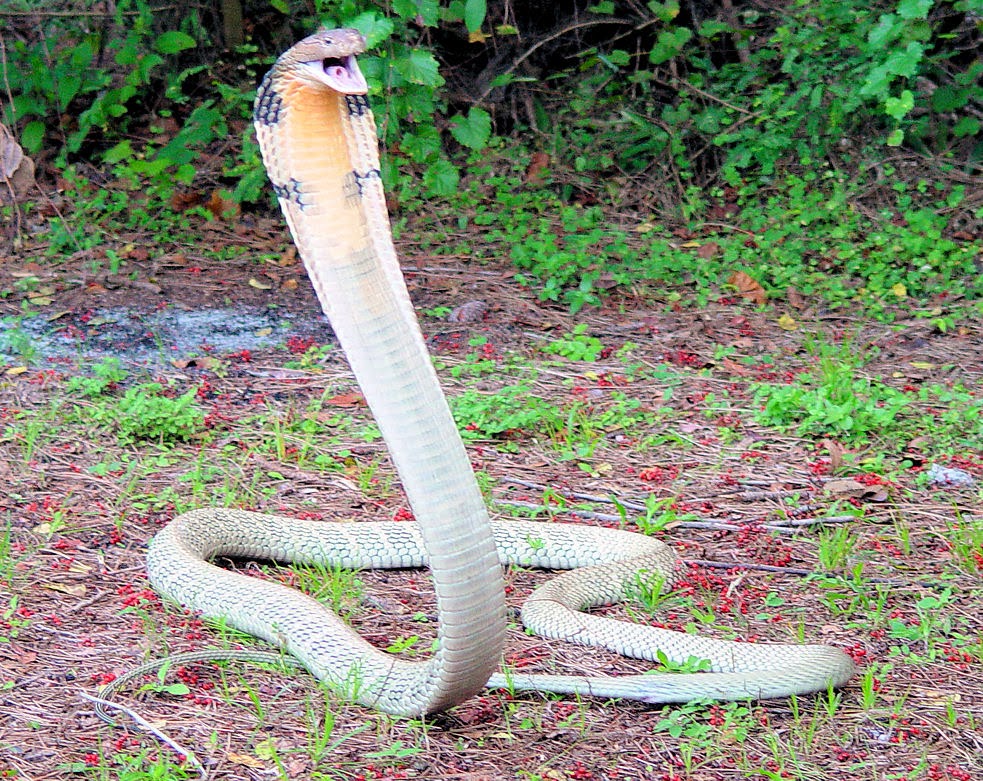#10 Goliath Bird-Eating Spider
This is the world's largest tarantula and can weigh up to 6oz! It has 1 inch long venomous fangs and as the name suggests is capable of ambushing and killing small birds. It also feasts on other insects, small lizards, rodents and even bats. Luckily, it's bite is painful but not deadly to humans.
Close second: Giant Huntsman Spider
#9 White Rhinoceros
This huge African mammal can weigh up to 2, 300 kg (over 360 stone) and can run at 50 km/hour which is impressive considering its size. The 40 inch anterior horn they sport can easily gore another animal to death, especially when hit mid-charge. Although herbivorous by nature, the rhinoceros can be a very dangerous animal.
Close second: Hippopotamus
#8 Killer Whale (or Orca)
Unbelievably, orcas belong to the dolphin family and are one of the most intelligent animals in the world. They grow up to 30 feet long and can weigh up to 10 tonnes. Orcas are ferocious killers with no natural predators - they are even above Great White Sharks in the food chain, which they often kill and eat. They hunt in pods of up to 40 orcas and are found in all of the world's oceans.
Close second: Walrus
#7 Saltwater Crocodile
Crocodiles have the greatest bite force ever recorded, at over 3, 700 lbs/inch, which is 300 times more powerful than a large dog and 3 times as powerful as a lion. They ambush from the water and lock their jaws around prey, making it almost impossible to escape, as the victim will usually be partially submerged in the water. This is the largest crocodile species and has been known to kill sharks and lions.
Close second: American Alligator
#6 Polar Bear
Polar bears charge at up to 40 km/h and as aquatic mammals, can swim at 10 km/h. They grow up to a staggering 10 feet tall and are the most ferocious animals on the planet. Polar bears will attack and eat anything they can catch - including seals, walruses and whales. Recently due to global warming starving bears have been straying into inhabited areas and preying on humans.
Close second: Kodiak Bear
#5 Cape Buffalo
Known to the hunting trade as 'Black Death', this mammal is thought to have killed more big game hunters than any other African animal, including lions and elephants (good on you, buffalo). Cape buffalo have been known to turn on and kill their predators with their enormous horns and incredible strength. At 6 foot tall and averaging 800 kg, this harmless-looking animal packs a punch.
Close second: African Elephant
#4 King Cobra
At 6 metres long, the King Cobra is the world's longest venomous snake. It's venom will kill an adult man in 5 minutes if no antidote is administered and some have been known to produce enough venom in one bite to bring down an elephant. Although a naturally shy reptile, the King cobra is viscous when threatened and raises the front third of its body from the ground to strike with force.
Close second: Burmese Python
#3 Great White Shark
The stuff of nightmares, there are few animals which conjure as much fear in our minds as the Great White Shark. They can detect a single drop of blood in 100 litres of water and swim at speeds of 25 km/h making them formidable predators of the ocean. Their mouths contain 300 razor-sharp teeth and they feast on anything they can catch, such as fish, sea lions, rays and whales.
Close second: Black Piranha
#2 Chacma Baboon
The Chacma or Cape baboon is one of the largest species of monkey, after Mandrills. Their canines are longer than those of a lion (at 2 inches long) and can inflict serious damage. Baboons are omnivorous occasional predators and alpha males in particular are very defensive when it comes to territory. They weigh as much as a large dog and are very agile and strong for their size.
Close second: Silverback Gorilla
#1 Komodo Dragon
The komodo dragon is the largest and arguably most dangerous lizard on earth. They grow to 10 feet in length and weigh up to 150 kg. Komodo dragons rely on ambush rather than speed to catch prey, though they can reach impressive speeds of 20 km/h. They attack prey with their shark-like teeth and once bitten, the animal will succumb to blood poisoning within 24 hours. This is due to the dragon's disease-ridden saliva which contains more than 50 strains of bacteria. Once the animal is dead, the dragon returns and uses its long, powerful claws to tear through the animal's flesh and consume the meat.










No comments:
Post a Comment